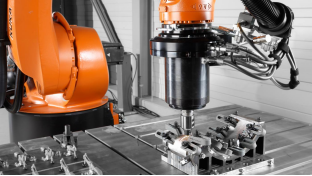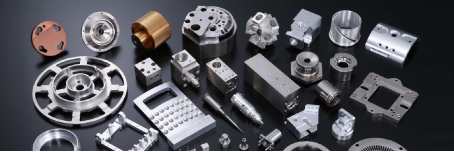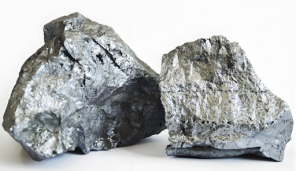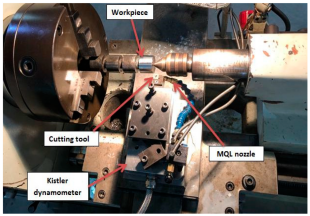In the vast world of materials science, metals, nonmetals and metalloids together build a solid foundation for the modern material world. They have a profound impact on the development of human society, play an irreplaceable role in many fields such as construction, electronics, energy, and medicine, and continue to promote innovation and change in various industries.

1. Metal
Definition
Metal is a kind of substance with metallic luster, good electrical conductivity, thermal conductivity and ductility. From a microscopic level, metal atoms are combined with each other through metallic bonds to form a regular crystal structure. Common metals include iron (Fe), copper (Cu), aluminum (Al), gold (Au), silver (Ag), etc., which occupy most of the positions in the periodic table.
Advantages and characteristics
Excellent electrical conductivity
The free electrons inside the metal can move in a directional manner under the action of the electric field, making the metal a good conductor of electricity.
Good thermal conductivity
The rapid movement of free electrons also allows the metal to conduct heat quickly. Aluminum is often used to make radiators, using its good thermal conductivity to quickly dissipate heat and ensure that electronic equipment, car engines, etc. operate at a suitable temperature.
High ductility
The metal crystal structure allows relative sliding between atomic layers, giving it excellent ductility.
High strength and toughness
Many metals have high strength and toughness after proper processing and treatment.
Types
Ferrous metals
Mainly include iron, manganese, chromium and their alloys, among which steel is the most widely used ferrous metal material. According to the different carbon content, steel can be divided into low carbon steel, medium carbon steel and high carbon steel; in addition, alloy steel can be made by adding other alloy elements such as nickel, molybdenum, vanadium, etc. to meet different performance requirements.
Nonferrous metals
Metals other than ferrous metals are collectively referred to as nonferrous metals. Common nonferrous metals include copper, aluminum, zinc, lead, tin, gold, silver, etc. Nonferrous metals have their own unique properties. For example, aluminum has low density and light weight, and is often used in aerospace, automobile manufacturing and other fields; copper has good conductivity and corrosion resistance, and is widely used in the electronics and electrical industries; gold and silver are often used in jewelry, currency manufacturing and key parts of high-end electronic devices due to their preciousness and good chemical stability.

Application fields
Construction field
Steel is the main material of building structures. From the frames of high-rise buildings to the supporting structures of bridges, the high strength and stability of steel are indispensable. Aluminum alloy doors and windows have become the mainstream choice of modern building doors and windows due to their light weight, corrosion resistance and beautiful appearance.
Metals are everywhere in electronic equipment. Metals such as copper and aluminum are used to manufacture wires and cables, circuit boards, etc. to ensure the stable transmission of electronic signals and electrical energy; precious metals such as gold and silver are used to manufacture key parts such as contacts and pins of electronic components. Due to their good conductivity and oxidation resistance, they can ensure the high reliability and long life of electronic equipment.
Transportation
In automobile manufacturing, steel is used in the manufacture of car bodies and chassis to provide the necessary strength and safety; aluminum alloys are used in engine cylinders, wheels and other components to achieve lightweight and improve fuel economy. In the field of aerospace, lightweight and high-strength metals such as titanium alloys and aluminum alloys are widely used in the manufacture of aircraft fuselages and engine components to meet the stringent requirements of aircraft for high strength and low density of materials.
Energy field
Metals play an important role in the production, transmission and storage of energy. For example, steel is used to manufacture oil and gas pipelines to ensure the safe transportation of energy; metals such as lithium and cobalt are key materials for manufacturing lithium-ion batteries, which promote the development of electric vehicles and energy storage technologies.

2. Metalloids
Definition
Metalloids, also known as semimetals, are a class of elements whose properties are between metals and nonmetals. They have some properties of metals and nonmetals and are located at the junction of metals and nonmetals in the periodic table, such as boron (B), silicon (Si), germanium (Ge), arsenic (As), antimony (Sb), tellurium (Te), polonium (Po), etc. The crystal structure and electronic structure of metalloids are somewhat complex, resulting in their properties showing mixed characteristics of metals and nonmetals.

Advantages and characteristics
Semiconductor properties
Many metalloids have semiconductor properties, and their conductivity is between that of conductors and insulators, and their electrical properties can be precisely controlled by doping and other methods.
Optical properties
Some metalloids and their compounds have unique optical properties. They are widely used in lighting, communications, displays and other fields.
Moderate chemical activity
The chemical activity of metalloids is neither as active as metals nor as stable as non-metals, but is in a moderate range. This enables them to play a unique catalytic role in some chemical reactions. For example, antimony can be used as a catalyst in some organic synthesis reactions to promote the reaction.
Types
Typical metalloids
Elements such as boron, silicon, germanium, arsenic, antimony, tellurium, and polonium are typical metalloids. For example, boron is often used to make special glass, ceramics, and high-performance alloys, and can improve the hardness and heat resistance of materials; silicon occupies a dominant position in the electronics industry and is the core material for making integrated circuits, solar cells, etc.; germanium was once widely used in early semiconductor devices and is now also used to make infrared optical devices.
Metalloid compounds
Compounds formed by metalloids and other elements also have important application value. For example, silicon carbide (SiC) has excellent properties such as high hardness, high thermal conductivity, and high temperature resistance, and can be used to make abrasives, high-temperature structural materials, semiconductor devices, etc.; boron nitride (BN) has good insulation, thermal conductivity, and high-temperature stability, and is often used to make high-temperature ceramics, electronic packaging materials, etc.

Application fields
Electronic information
Metalloids and their compounds are the core materials of the semiconductor industry. From computer chips to smartphone processors, from integrated circuits to sensors, they are inseparable from metalloid materials such as silicon and germanium. Their semiconductor properties enable electronic devices to be miniaturized, high-performance and intelligent, promoting the rapid development of information technology.
Optoelectronics
Metalloid materials play a key role in optoelectronic fields such as optical communications, lighting, and display. For example, compound semiconductors such as gallium arsenide and indium phosphide are used to manufacture optoelectronic devices such as high-speed photodetectors and laser transmitters, realizing efficient conversion and transmission of optical and electrical signals; gallium nitride-based LEDs are widely used in the lighting field, with the advantages of energy saving, long life, and high brightness.
Energy field
Metalloids also have important applications in the energy field. Silicon-based solar cells are currently the most widely used solar power generation technology. By converting solar energy into electrical energy, they provide important support for sustainable energy development; some metalloid compounds, such as cadmium sulfide (CdS) and cadmium telluride (CdTe), are also used to manufacture new solar cells with high photoelectric conversion efficiency and cost advantages.
Chemical Industry and Catalysis
Metalloids and their compounds are often used as catalysts in chemical production. For example, in petrochemicals, certain catalysts containing antimony and germanium can be used to promote reactions such as cracking and reforming of petroleum, thereby improving the quality and yield of petroleum products; in organic synthesis, boron compound catalysts can accelerate organic reactions and improve the selectivity and yield of reactions.
With the continuous advancement of science and technology, the requirements for material performance are increasing day by day, and these two types of materials are also continuously innovating and developing. Metal materials are constantly improving their performance and application scope through alloying, nanotechnology and other means; semi-metals have shown great potential in cutting-edge fields such as semiconductors and optoelectronics, promoting changes in information technology and energy technology.





